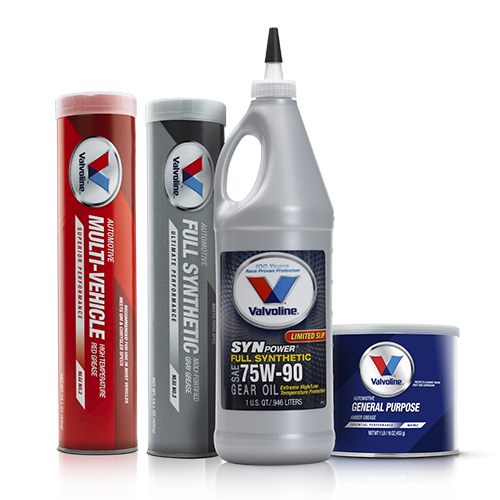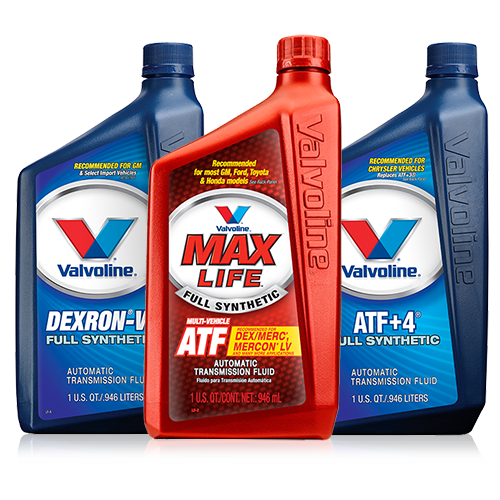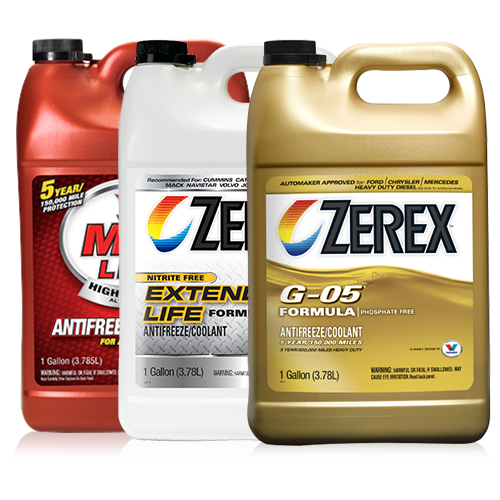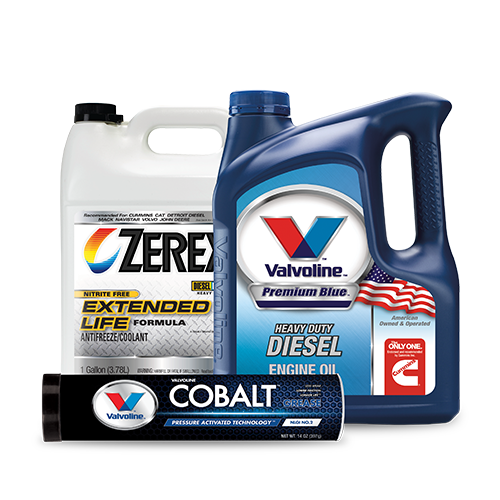Press Releases
LEXINGTON, Ky. – Valvoline Inc. (NYSE: VVV), a leading supplier of premium branded lubricants and automotive services, today announced financial results for the fiscal first quarter ended December 31, 2016.
Valvoline results were driven by growth in premium product sales, the increase in VIOC stores versus prior year, exceptional performance in SSS and continued volume growth in international markets.
Reported first-quarter EPS of $0.35 was up 3 cents compared to the same period last year. Adjusted EPS of $0.35 was also up 3 cents year over year, with 2 cents due to improvements across the operating segments. The remaining 1 cent was due to certain items related to the separation from Ashland, including the transfer of postretirement plans which generated income resulting in a 4 cent benefit versus prior year period and interest expense related to the creation of Valvoline’s new capital structure which resulted in a 3 cent decline.
To aid in the understanding of Valvoline’s ongoing business performance, certain items in this news release are presented on an adjusted basis. For a reconciliation of non-GAAP data (which are defined in the paragraph “Use of Non-GAAP Measures”), refer to tables 7, 8 and 9 in this news release.
Adjusted first-quarter earnings excluded the gain on other postretirement plan remeasurement and separation costs, which combined had no net material impact. Prior year results included no adjustments.
“I am very pleased with our first quarter results, as each of our segments delivered solid year-over-year volume gains. While overall industry trends have been favorable recently, our teams continue to outperform the market,” said Chief Executive Officer Sam Mitchell. “Disciplined margin management and strong performance from our two growth engines, Quick Lubes and International, drove better-than-expected profitability for the quarter. This performance gives us a great start to our first year as a public company.”
Operating Segment Results
Core North America
• Lubricant volume grew 2% to 24.1 million gallons
• Premium mix increased 410 basis points to 43.8%
• Operating income declined 4% to $51 million, EBITDA declined 5% to $54 million
The segment volume increase was the result of share gains and timing of promotional campaigns. The EBITDA decline was largely the result of modestly lower unit margins versus prior year. As previously announced, Valvoline implemented price increases across all channels during the first quarter of this year in order to offset the base oil cost increases announced in the latter half of fiscal year 2016. The first half of fiscal 2016 benefited from a positive lag effect, as the result of declining raw material costs.
Quick Lubes
• VIOC SSS increased 9.0% overall, 9.5% for company-owned stores, 8.9% for franchised stores
• Operating income grew 26% to $29 million, EBITDA grew 26% to $34 million, with approximately half of the increase in EBITDA coming from the former Oil Can Henry’s stores, which were acquired in February 2016
• VIOC ended the quarter with 1,076 stores, an increase of 8 during the quarter. This is an increase of 120 stores over prior year Q1, 89 of which came from Oil Can Henry’s.
The Quick Lubes operating segment had an outstanding quarter, reflecting continued execution of our SuperPro model, the effectiveness of our digital marketing tools, solid customer retention at VIOC and the performance of the former Oil Can Henry’s stores. Improvements in SSS growth were primarily due to an increased number of transactions in the quarter, driven by continued success of our customer acquisition and retention tools. In addition, SSS was positively impacted by an additional sales day and favorable weather versus prior year.
On January 4, Valvoline Inc. announced a definitive agreement to acquire 28 quick-lube stores from Time-It Lube, expanding VIOC’s presence in east Texas and marking its entry intoLouisiana, accelerating the expansion of our store network. The acquisition is expected to be completed in the fiscal second quarter.
International
• Lubricant volume grew 12% to 13.7 million gallons
• Emerging markets volume (including unconsolidated joint ventures) grew 16%; mature markets volume increased by 8%
• Operating income grew 25% to $20 million, EBITDA increased 24% to $21 million
The International operating segment delivered broad-based volume growth across both emerging and mature markets. Volume gains were driven by a combination of ongoing market penetration, as well as growth in the heavy duty market.
The increase in EBITDA versus prior year reflects volume, sales and margin growth as well as an increase in joint venture equity and royalty income of $2 million.
Balance Sheet and Cash Flow
• Total debt of $740 million, excluding capital lease obligations and including $75 million from our new accounts receivable securitization facility, which was used to repay our term loan by an equivalent amount
• Net debt of $504 million
• Cash provided by operating activities of $88 million, an increase of $48 million from prior year
• Free cash flow of $79 million
Free cash flow in the quarter was up $44 million over prior year. The increase was primarily driven by the timing of cash settlements of separation-related working capital accounts.
Fiscal 2017 Outlook
“Our strong performance in the first quarter and our ability to manage margins give us confidence that we will deliver full-year results above our prior expectations, and as a result we are raising our full-year EPS guidance,” Mitchell said. “The business has good momentum and we are well positioned for driving faster growth.”
The company expects Ashland to distribute its 83 percent stake in Valvoline following the release of fiscal Q2 earnings by both companies, subject to market conditions and other factors.
Fiscal 2017 updated full-year expectations
For second-quarter fiscal 2017, Valvoline anticipates EBITDA from operating segments of $106-$111 million.
Conference Call Webcast
Valvoline will host a live audio webcast of its first-quarter fiscal 2017 conference call at 8 a.m. EST on Friday, January 27, 2017. The webcast and supporting materials will be accessible through Valvoline's website at http://investors.valvoline.com. Following the live event, an archived version of the webcast and supporting materials will be available for 12 months.
Initial Public Offering (IPO) and Basis of Presentation
In September 2016, in connection with the IPO, Ashland Inc. contributed the capital stock of its business unit Valvoline to Valvoline Inc., which continues to be a controlled, public subsidiary of Ashland. Prior to this time, Ashland held substantially all of the assets and liabilities related to Valvoline’s current business.
The financial statements for periods presented prior to the IPO were prepared on a stand-alone basis, derived from Ashland’s consolidated financial statements and accounting records using the historical results of operations, and assets and liabilities attributed to Valvoline’s operations, including allocations of expenses from Ashland. For periods following the IPO, Valvoline was transferred various assets and liabilities from Ashland and has been operating as a stand-alone business with arms-length transition service agreements with Ashland. Our consolidated and segment results for periods prior to the IPO are not necessarily indicative of our future performance and do not reflect what our financial performance would have been had we been a stand-alone public company during the periods presented.
Use of Non-GAAP Measures
In addition to our net income determined in accordance with U.S. GAAP, we evaluate operating performance using certain non-GAAP measures including adjusted income measures such as EBITDA, which we define as our net income, plus income tax expense (benefit), net interest and other financing expenses, and depreciation and amortization, and adjusted EBITDA, which we define as EBITDA adjusted for unusual, non-operational or restructuring-related activities, such as losses (gains) on pension and other postretirement plan remeasurement and separation costs. We define EBITDA from operating segments as operating income from Core North America, Quick Lubes and International segments plus depreciation and amortization. These measures are not prepared in accordance with U.S. GAAP. Management believes the use of non-GAAP measures on a consolidated and reportable segment basis assists investors in understanding the ongoing operating performance of our business by presenting comparable financial results between periods. The non-GAAP information provided is used by our management and may not be comparable to similar measures disclosed by other companies, because of differing methods used by other companies in calculating EBITDA and adjusted EBITDA. EBITDA and adjusted EBITDA provide a supplemental presentation of our operating performance on a combined and reportable segment basis. We have also given prospective guidance using non-GAAP measures, determined in the same way described above, but have decided it is not practicable to reconcile that information.
We use free cash flow as an additional non-GAAP metric of cash flow generation. By deducting capital expenditures from operating cash flows, we are able to provide a better indication of the ongoing cash being generated that is ultimately available for both debt and equity holders, as well as other investment opportunities. Unlike cash flow from operating activities, free cash flow includes the impact of capital expenditures, providing a more complete picture of cash available to capital providers. Free cash flow has certain limitations, including that it does not reflect adjustments for certain non-discretionary cash flows, such as allocated costs. The amount of mandatory versus discretionary expenditures can vary significantly between periods. Our results of operations are presented based on our management structure and internal accounting practices. The structure and practices are specific to us; therefore, our financial results and free cash flow are not necessarily comparable with similar information for other comparable companies. Free cash flow has limitations as an analytical tool and should not be considered in isolation from, or as an alternative to, or more meaningful than, cash flows provided by operating activities as determined in accordance with U.S. GAAP. Because of these limitations, you should rely primarily on cash flows provided by operating activities as determined in accordance with U.S. GAAP and use free cash flow only as a supplement.
To see all statements and balance sheet, download our PDF or visit http://investors.valvoline.com/news/news-details/2017/Valvoline-Inc-Reports-Strong-First-Quarter-Fiscal-2017-Financial-Results-and-Raises-Full-Year-Outlook/default.aspx.
About Valvoline
Valvoline Inc. (NYSE: VVV) is a leading worldwide producer and distributor of premium branded automotive, commercial and industrial lubricants, and automotive chemicals. In 2016, it ranked as the #2 quick-lube chain by number of stores and #3 passenger car motor oil brand in the DIY market by volume in the United States. The brand operates and franchises more than 1,070 Valvoline Instant Oil Change centers in the United States. It also markets Valvoline lubricants and automotive chemicals; MaxLife lubricants created for higher-mileage engines, SynPower synthetic motor oil; and Zerex antifreeze. Visit www.valvoline.com to learn more.
Forward-Looking Statements
This news release contains forward-looking statements within the meaning of Section 27A of the Securities Act of 1933, as amended, and Section 21E of the Securities Exchange Act of 1934, as amended. Valvoline has identified some of these forward-looking statements with words such as “anticipates,” “believes,” “expects,” “estimates,” “is likely,” “predicts,” “projects,” “forecasts,” “may,” “will,” “should” and “intends” and the negative of these words or other comparable terminology. In addition, Valvoline™ may, from time to time, make forward-looking statements in its annual report, quarterly reports and other filings with the Securities and Exchange Commission (“SEC”), news releases and other written and oral communications. These forward-looking statements are based on Valvoline’s current expectations and assumptions regarding, as of the date such statements are made, Valvoline’s future operating performance and financial condition, including Valvoline’s separation from Ashland (the “Separation”), the expected timetable for Ashland’s potential distribution of its remaining Valvoline common stock to Ashland shareholders (the “Stock Distribution”) and Valvoline’s future financial and operating performance, strategic and competitive advantages, leadership and future opportunities, as well as the economy and other future events or circumstances. Valvoline’s expectations and assumptions include, without limitation, internal forecasts and analyses of current and future market conditions and trends, management plans and strategies, operating efficiencies and economic conditions (such as prices, supply and demand, cost of raw materials, and the ability to recover raw-material cost increases through price increases), and risks and uncertainties associated with the following: demand for Valvoline’s products and services; sales growth in emerging markets; the prices and margins of Valvoline’s products and services; the strength of Valvoline’s reputation and brand; Valvoline’s ability to develop and successfully market new products and implement its digital platforms; Valvoline’s ability to retain its largest customers; potential product liability claims; achievement of the expected benefits of the Separation; Valvoline’s substantial indebtedness (including the possibility that such indebtedness and related restrictive covenants may adversely affect Valvoline’s future cash flows, results of operations, financial condition and Valvoline’s ability to repay debt) and other liabilities; operating as a stand-alone public company; Valvoline’s ongoing relationship with Ashland; failure, caused by Valvoline, of Ashland’s Stock Distribution of Valvoline common stock to Ashland shareholders to qualify for tax-free treatment, which may result in significant tax liabilities to Ashland for which Valvoline may be required to indemnify Ashland; and the impact of acquisitions and/or divestitures Valvoline has made or may make (including the possibility that Valvoline may not realize the anticipated benefits from such transactions). These forward-looking statements are subject to a number of known and unknown risks, uncertainties and assumptions, including, without limitation, risks and uncertainties affecting Valvoline that are described in its most recent Form 10-K (including in Item 1A Risk Factors and “Use of estimates, risks and uncertainties” in Note 2 of Notes to Consolidated Financial Statements) filed with the SEC, which is available on Valvoline’s website at http://investors.valvoline.com/sec-filings. In light of these risks, uncertainties and assumptions, the forward-looking events and circumstances discussed in this news release may not occur, and actual results could differ materially and adversely from those anticipated or implied in the forward-looking statements.
You should not rely upon forward-looking statements as predictions of future events. Although Valvoline believes that the expectations reflected in these forward-looking statements are reasonable, Valvoline cannot guarantee that the expectations reflected herein will be achieved. In light of the significant uncertainties in these forward-looking statements, you should not regard these statements as a representation or warranty by Valvoline or any other person that Valvoline will achieve its objectives and plans in any specified time frame, or at all. These forward-looking statements speak only as of the date of this news release. Except as required by law, Valvoline assumes no obligation to update or revise these forward-looking statements for any reason, even if new information becomes available in the future.
All forward-looking statements attributable to Valvoline are expressly qualified in their entirety by these cautionary statements as well as others made in this news release and hereafter in Valvoline’s other SEC filings and public communications. You should evaluate all forward-looking statements made by Valvoline in the context of these risks and uncertainties.
Financial results are preliminary until Valvoline's Form 10-Q is filed with the SEC. TM Trademark, Valvoline or its subsidiaries, registered in various countries
SM Service mark, Valvoline or its subsidiaries, registered in various countries
FOR FURTHER INFORMATION:
Investor Relations:
Sean T. Cornett
+1 (859) 357-2798
scornett@valvoline.com
Media Relations:
Valerie Schirmer
+1 (859) 357-3235
vschirmer@valvoline.com
 Motor Oil
Motor Oil
 Grease & Gear Oil
Grease & Gear Oil
 Automatic Transmission
Automatic Transmission
 Antifreeze & Radiator
Antifreeze & Radiator
 Pro-V Racing
Pro-V Racing
 Heavy Duty
Heavy Duty


 Download this Press Release
Download this Press Release